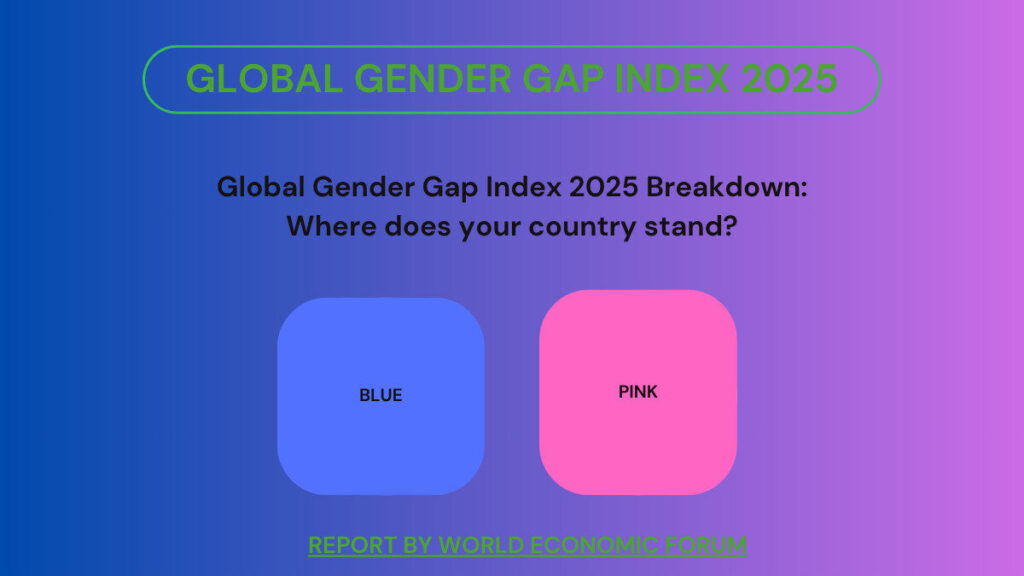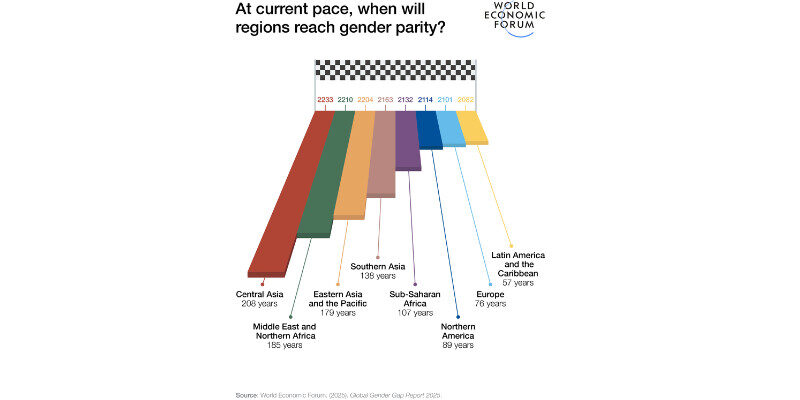
Global Gender Gap Index 2025 Revealed: Who’s Leading, Who’s Lagging, and Why It Matters. Gender Equality in 2025: Insights for the Global Gender Gap Index Report. From the Global Gender Gap Index 2025, you can extract important rankings, key takeaways, & surprising changes.
Overall Progress
The 19th Global Gender Gap Index covers 148 economies and finds that 68.8 % of the gender gap has been closed—a modest increase of +0.3 pp from 2024. Among a constant set of 100 economies since 2006, the closure reached 69.0 %, indicating steady long-term improvement.

Subindex Insights
Economic and political gaps are the largest remaining hurdles. Despite steady improvements, at current rates, political parity needs ~162 years and economic parity ~135 years to close.
Australia (13th globally)
Climbing 11 places from 24th last year, Australia now ranks 13th with notable gains across political empowerment, economic participation, and education. Government reforms—such as improved wages, enhanced healthcare access, robust safety policies, and action against gender-based violence—drove the progress. The country’s balanced approach across the four subindices shows how comprehensive policy coordination can accelerate closing gaps.
Ethiopia (75th)
Ethiopia has surged in political empowerment, now achieving a 48.9 % score, boosted by increased female ministerial representation following its first female president. This case demonstrates that high‑impact political reforms can quickly raise a nation’s overall gender parity prospects, even with mixed outcomes in other areas.
Chad (bottom ten globally)
One of the lowest-ranked, Chad exhibits severe gender inequality: only ~57.6 % overall, with economic participation at 66.7 % and political empowerment under 17 %—highlighting systemic educational and governance deficits. This underscores how weak institutions and poor legal enforcement perpetuate deep gender inequity.
Incorporate care economy valuation in GDP, establish national support systems, and redistribute unpaid work via policy.
Boost female labour participation
Expand affordable childcare, paternity leave, safe transport, digital skilling, and rural employment infrastructure.
Strengthen political inclusion
Enforce gender quotas in Parliament, ministries, and political party candidate lists; capacity building for Dalit and rural women.
Address implementation gaps
Close gaps between legal provisions and ground realities via stronger monitoring, community outreach, and gender sensitisation.
Focus on emerging economies & tech
Promote digital literacy and STEM access; ensure AI policies are gender-inclusive.
Adopt integrated reforms
Australia’s holistic policies—from parental leave to anti‑GBV action—serve as a powerful template.
Accelerate political inclusion
Ethiopia’s rise underscores how investing in women’s leadership positions yields rapid parity gains.
Strengthen institutions in lagging countries
Chad’s example shows that without robust systems in education, labour rights, and political quotas, closing gender gaps remains elusive.
Countries committed to gender parity can adopt these lessons—combining layered policy action, political empowerment, and institution-building—for measurable progress worldwide.
While India has made commendable strides in education, health, and economic income, the political representation and labour force participation gaps remain significant roadblocks. Compared to global leaders, India still trails by over 30 percentage points. This Index underscores the interplay of policy intent (laws and schemes) and systemic implementation challenges—at both macro and micro levels—which should be addressed through comprehensive, gender‑responsive strategies.
Similar News
No results available
ResetNo results available
ResetStay updated with our daily newsletter. Get the latest news delivered straight to your inbox.
Connect with us on social media for the latest updates and engaging content. Follow us on Facebook, Twitter, Instagram, and LinkedIn.
© 2024 Khabarin24. All rights reserved. | Designed By : Ankivo